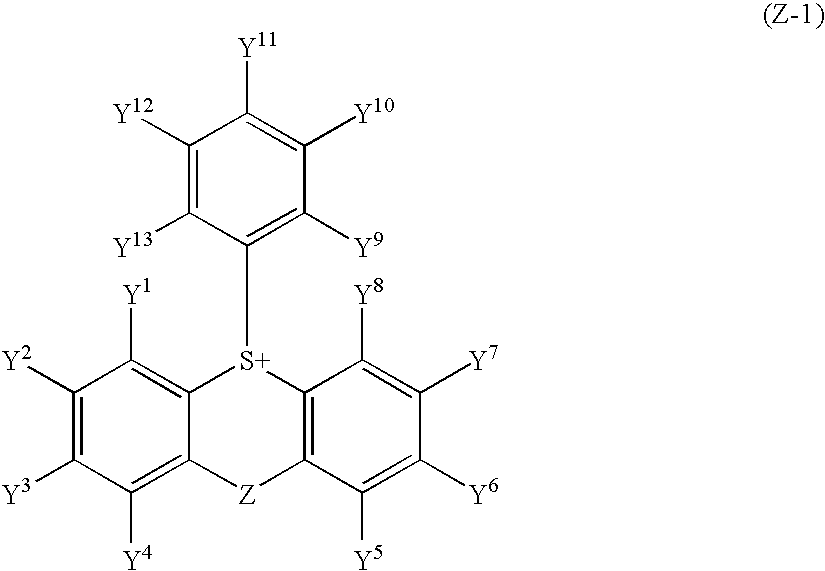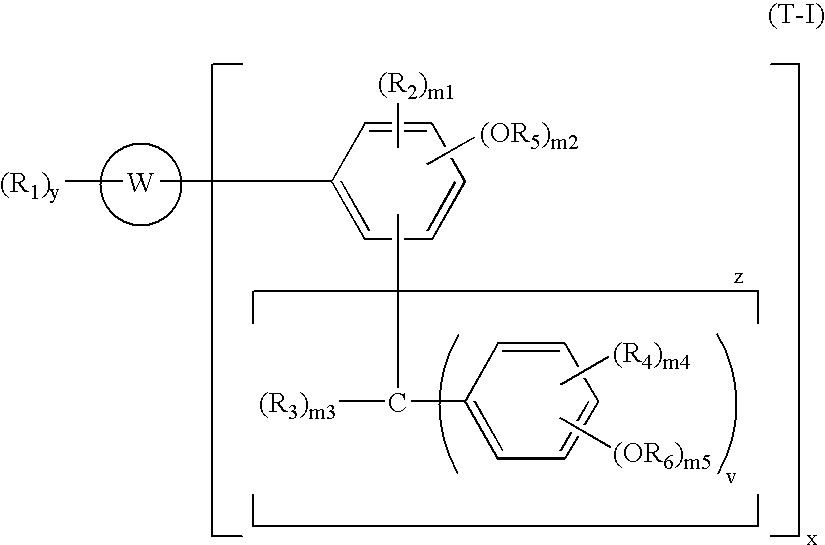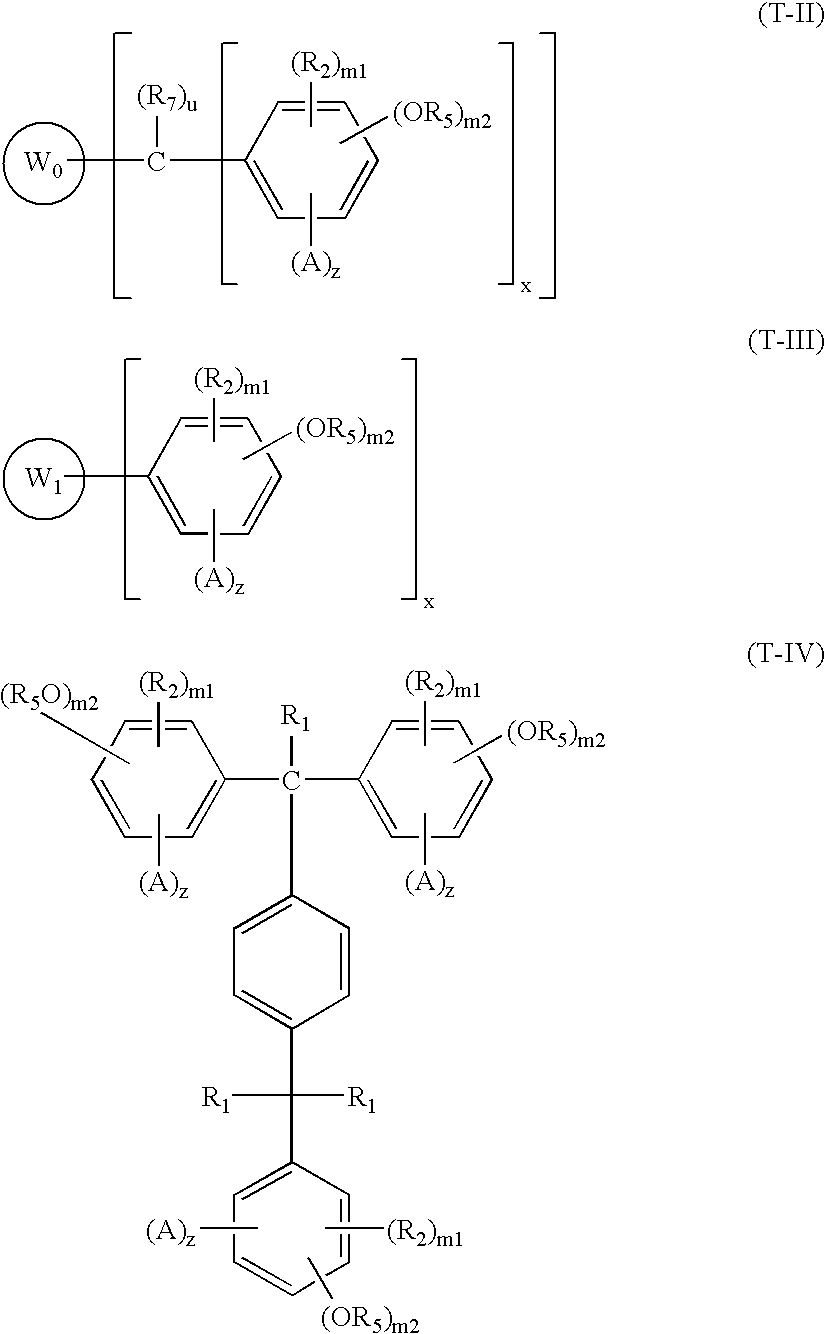Positive resist composition and pattern formation method using the same
a composition and resist technology, applied in the field of resist composition, can solve the problems of reducing the yield, unable to meet the high sensitivity, high resolution and good line edge roughness, and the molecular shape of the polymer compound is reflected in the pattern profile and line edge roughness, etc., to achieve the effect of improving the performance of ultra fine fabrication, high sensitivity and high resolution
- Summary
- Abstract
- Description
- Claims
- Application Information
AI Technical Summary
Benefits of technology
Problems solved by technology
Method used
Image
Examples
synthesis example 1
Synthesis of 10-tolyl-9-oxothioxanthenium nonafluorobutanesulfonate (Z-1)
[0203]In 40 ml of trifluoroacetic acid was stirred 10 g of thioxanthen-9-one, and a solution prepared by mixing 5.4 ml of an aqueous 30% hydrogen peroxide solution and 10.8 ml of trifluoroacetic acid was gradually added thereto under cooling with ice. The mixture was stirred for 30 minutes under cooling with ice and then stirred at room temperature for one hour. The reaction solution was poured into water and the crystals deposited were collected by filtration. The crystals obtained were recrystallized from acetonitrile to obtain 4.6 g of a sulfoxide form. Subsequently, 3 g of the sulfoxide form was stirred in 20 ml of toluene, and 3.7 ml of trifluoroacetic anhydride and 2.2 ml nonafluorobutanesulfonic acid were added thereto under cooling with ice. The temperature of the reaction solution was gradually raised to room temperature and then the reaction solution was stirred for one hour. Diisopropyl ether was add...
synthesis example 2
Synthesis of 10-tolyl-9-oxothioxanthenium 3,5-bistrifluoromethylbenzenesulfonate (Z-2)
[0204]In a methanol / water (1 / 1) solution was dissolved 1.5 g of 10-tolyl-9-oxothioxanthenium nonafluorobutanesulfonate (Z-1) obtained in Synthesis Example 1, and the resulting solution was passed through an ion exchange resin (Amberlite IRA402Cl in which the anion was replaced by OH with an aqueous NaOH solution). After adding 1 g of 3,5-bistrifluoromethylbenzenesulfonic acid to the eluent, the solution was extracted with chloroform to obtain 1.7 g of 10-tolyl-9-oxothioxanthenium 3,5-bistrifluoromethylbenzenesulfonate (Z-2) which was a compound in which the counter salt was changed. 1H-NMR (400 MHz, CDCl3): σ 2.37 (s, 3H), 7.34 (d, 2H), 7.79 (m, 3H), 7.93 (m, 4H), 8.34 (m, 4H), 8.62 (d, 2H).
synthesis example 3
Synthesis of 2-acetyl-10-tolyl-9-oxothioxanthenium nonafluorobutanesulfonate (Z-8)
[0205]In 200 ml of dimethylformamide were stirred 15 g of thiosalicylic acid and 20 g of 4-bromoacetophenone in the presence of 12 g of sodium carbonate and 0.2 g of copper catalyst at 170° C. for 6 hours, and the reaction solution was poured into an aqueous hydrochloric acid solution and filtered. The crystals obtained were recrystallized from acetonitrile to obtain 16 g of a sulfide. Subsequently, 10 g of the sulfide obtained was stirred in 100 g of polyphosphoric acid at 60° C. for 5 hours and the mixture was poured inro ice water. The crystals deposited were collected by filtration, washed with an aqueous sodium hydrogencarbonate solution and then water, and then recrystallized from ethanol to obtain 5 g of 2-acetyl-9H-thioxan-9-one. Further, 3 g of the 2-acetyl-9H-thioxan-9-one obtained was stirred in 12 ml of trifluoroacetic acid under cooling with ice, and a mixed solution containing 1.4 ml of a...
PUM
 Login to View More
Login to View More Abstract
Description
Claims
Application Information
 Login to View More
Login to View More - R&D
- Intellectual Property
- Life Sciences
- Materials
- Tech Scout
- Unparalleled Data Quality
- Higher Quality Content
- 60% Fewer Hallucinations
Browse by: Latest US Patents, China's latest patents, Technical Efficacy Thesaurus, Application Domain, Technology Topic, Popular Technical Reports.
© 2025 PatSnap. All rights reserved.Legal|Privacy policy|Modern Slavery Act Transparency Statement|Sitemap|About US| Contact US: help@patsnap.com



